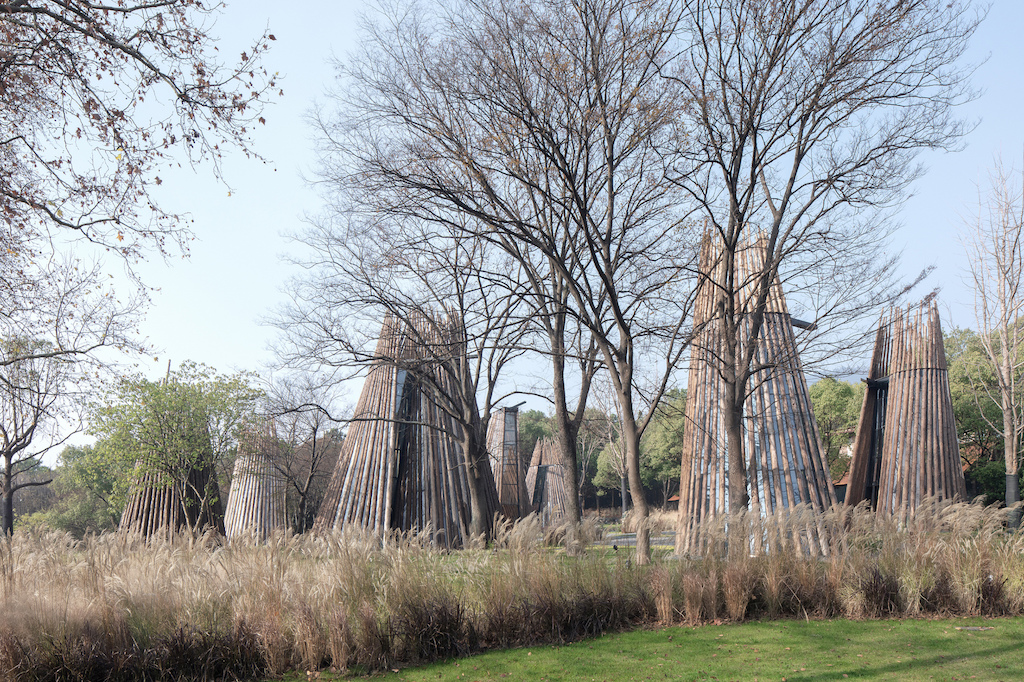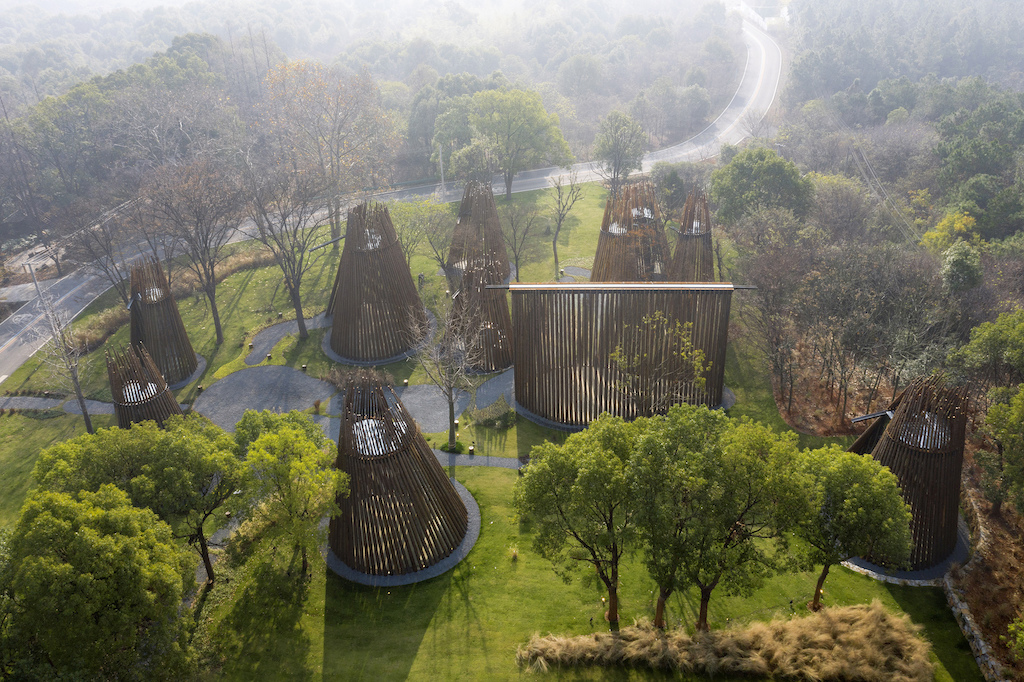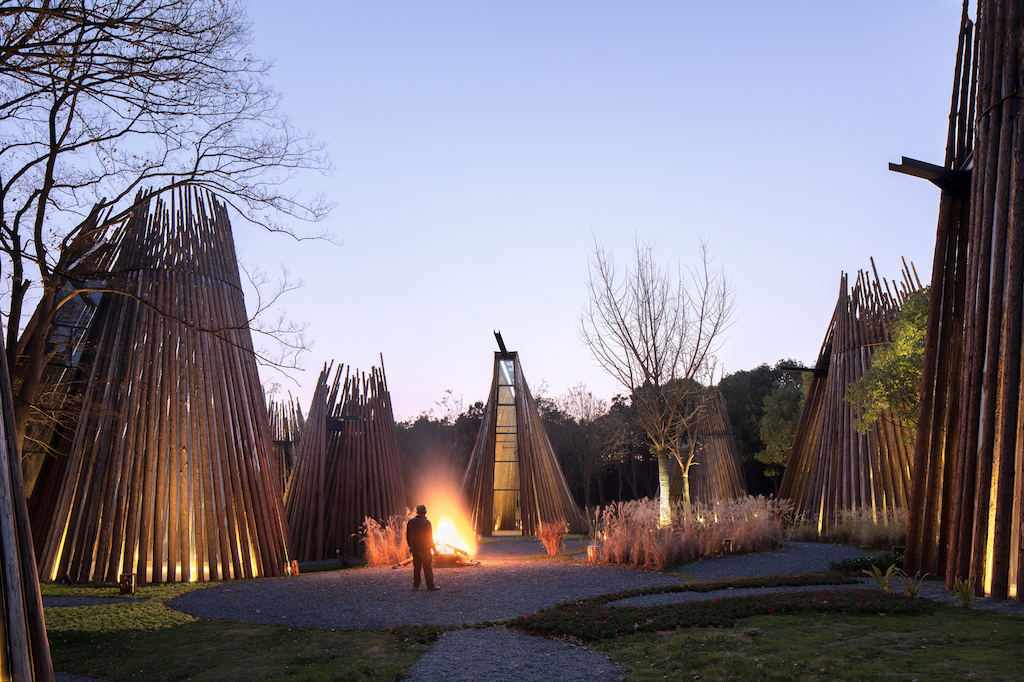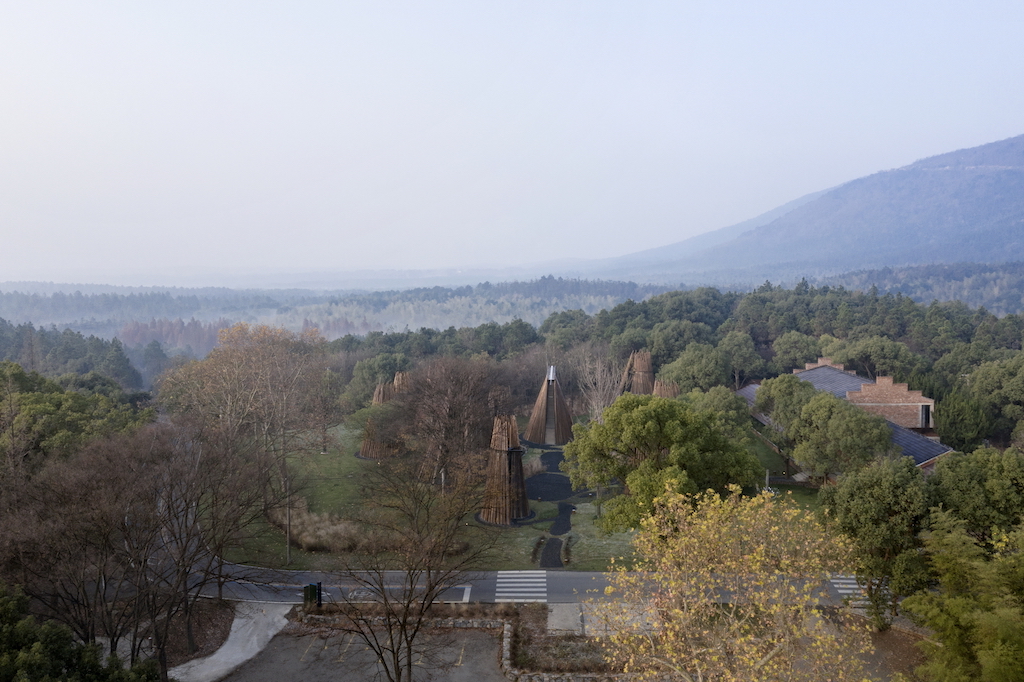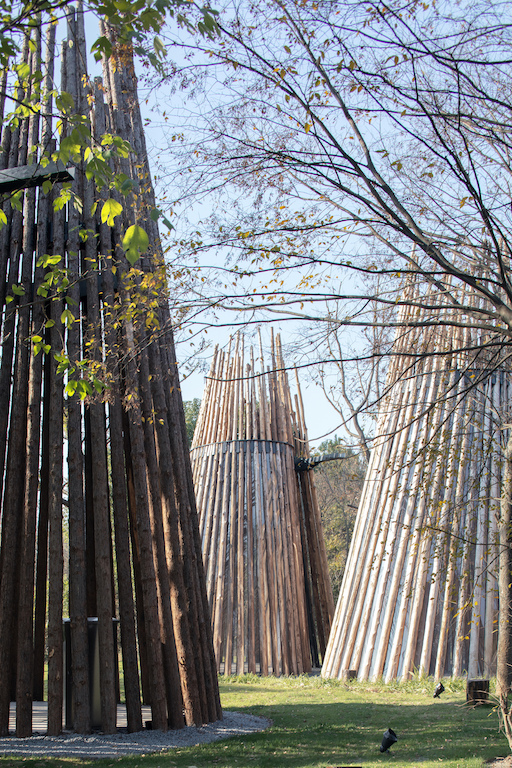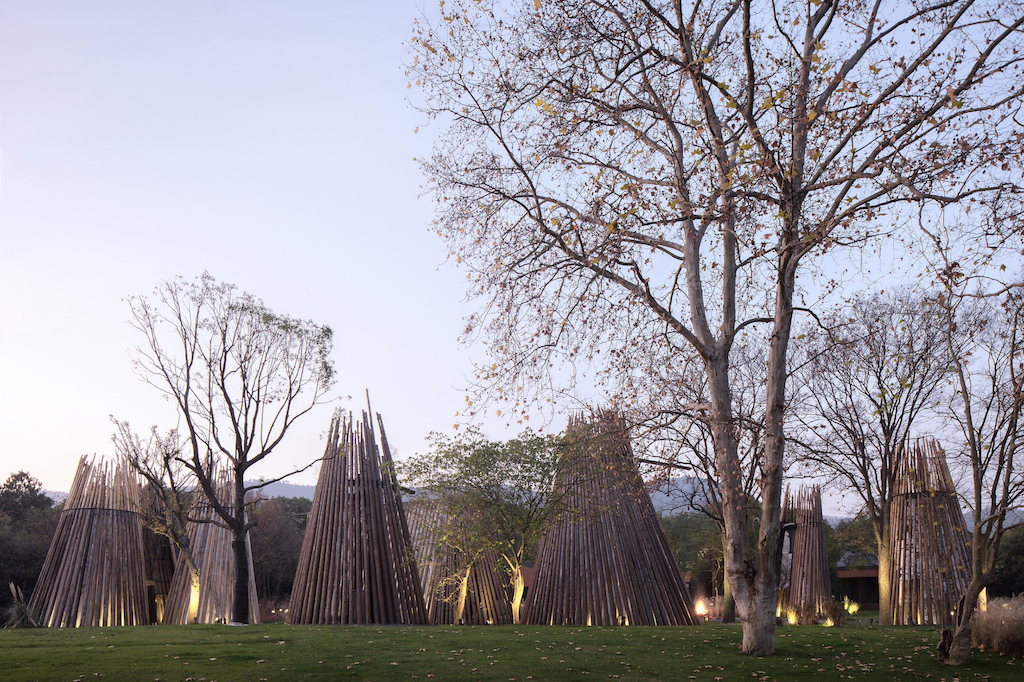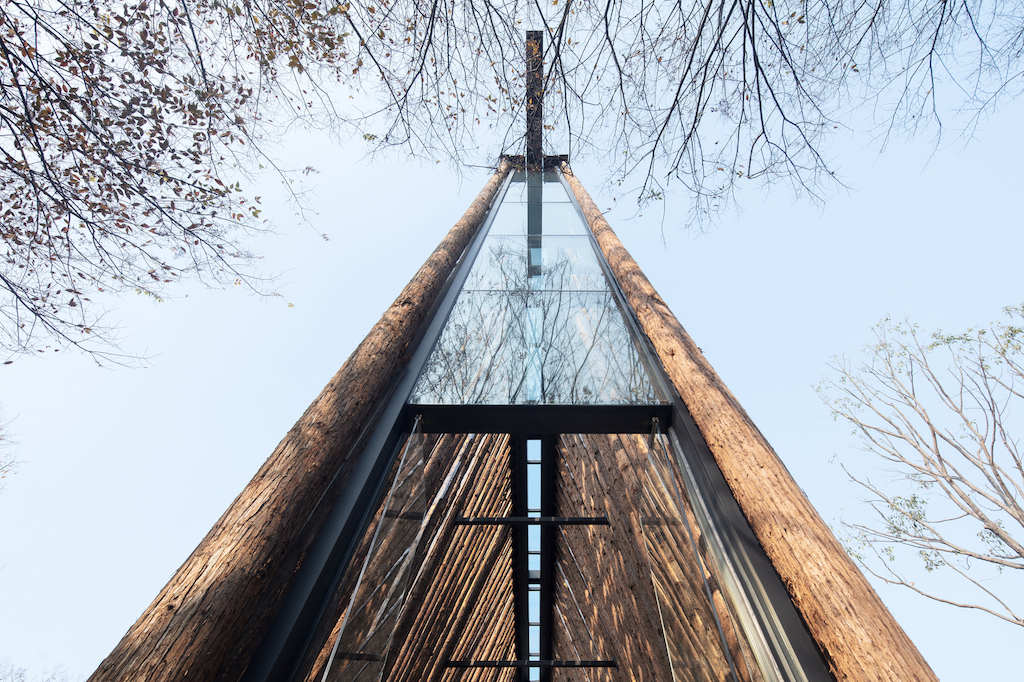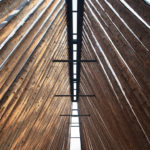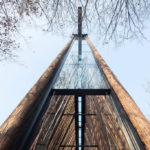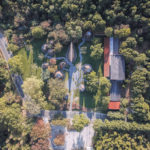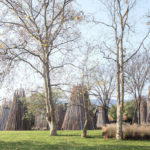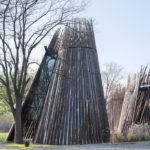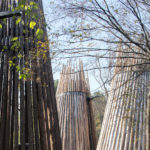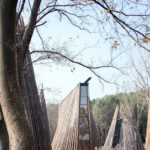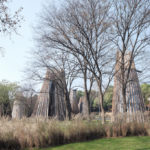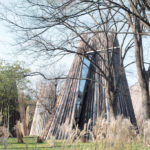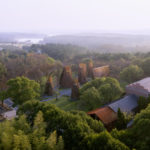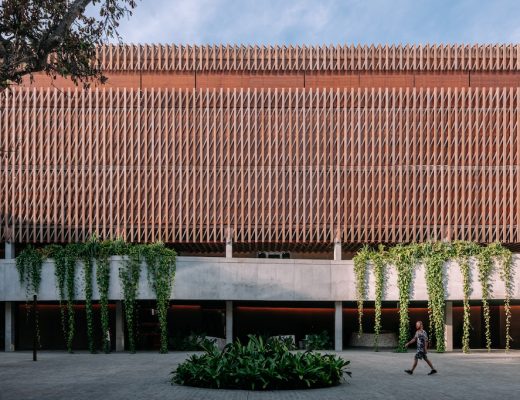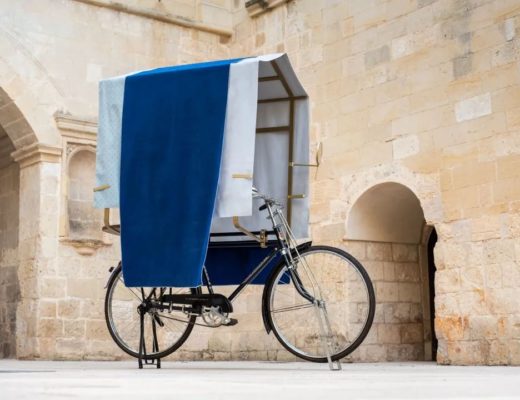Liyang City in China’s Jiangsu province is surrounded by scenic fields and villages, and culminate in the vast Wawushan Forest in Yangwan. At the Liyang Yangwan Visitor Centre, Origin Architects in collaboration with Arch-harmony Architecture Design has designed an installation that features a group of wooden structures built on the land of abandoned forestry worker dorms and has now become a stopover for tourists along the Liyang Tourism Route 1.
When the team of architects, led by Ji Li and assisted by Kejia Mei, Jing Wang, Hui Lian, and Xinyu Wang arrived at the site for the first time a few years ago, there were only piles of spruce trees chopped from the nearby forest. Exposed to the elements year after year, the mottled spruce bark lay there in the wilderness. The architects were deeply inspired by the forgotten spruce trees and wished to reinvigorate them.
The architects wanted to combine these spruce trees with contemporary technologies, constructing a 331m² new space rooted in its original environment. After preservative treatments, spruce logs were erected in the forest to form a spiral array pointing upwards. With their roots buried deep in the ground, these logs were framed by customised circular steel beams. Glass and polycarbonate panels were embedded into the gaps between the logs, allowing sunlight to radiate into the building.
The challenging construction process brought together artisans and architects and creatively combined modern steel structure technologies with traditional woodworking skills.
The building complex consists of multiple groups of spiral wooden structures and one small auditorium that provides facilities such as resting, catering, parties, ceremonies, and other supporting services on different scales. The external space can be re-arranged freely, therefore naturally blending into the vast forest. The upmost part of its internal space is defined by slender spruce logs taller than 10 meters. Walking inside feels like being in a tranquil towering forest. The distinctions between the inside and the outside slowly fade away due to the natural flow of light and shadow.
See the full image gallery here:
Photos: Zhi Xia
You might also like:
Bonfire installation by MAT Architects in Shenzhen references collective space and ideas
Shma Company architects designs sustainable air purifying installation for Bangkok Design Week

